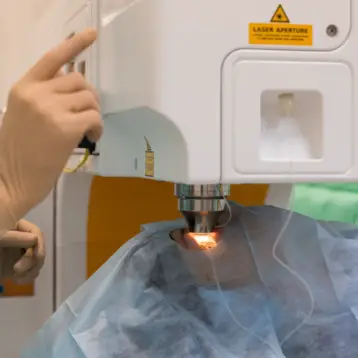|
Could the cell defend itself against infection of the human immunodeficiency virus (HIV)? Well apparently it might be able to using nuclear DNA repair proteins that normally function in the repair of DNA lesions. In the future these proteins might help fight off HIV infection as an alternative to or in conjunction with today’s anti-AIDS drugs to which HIV is more likely to become resistant by rapid mutation. Those drugs are designed to inhibit specific stages of the HIV life cycle.
|
The life cycle of the retrovirus HIV can be described from the point of viral attachment by binding of HIV membrane proteins to a host cell surface receptor. Subsequent membrane fusion causes injection, into the cytoplasm of the cell, of the HIV nucleocapsid or nucleoprotein core, which contains its genetic material in the form of two copies of a single stranded RNA genome, as well as several viral enzymes and other proteins. Using the viral reverse transcriptase enzyme, the retroviral RNA genome is copied in the cytoplasm into a double stranded DNA form by a process known as reverse transcription. The DNA copy – also known as cDNA, for copy DNA – is then transported to the nucleus of the cell where it is integrated into the host cell’s chromosomal DNA using the viral enzyme integrase in concert with various host proteins. At this point, the integrated viral DNA, termed a provirus, is replicated as part of the host chromosomal DNA. Using the provirus as template, the host cell transcription machinery synthesizes RNA that is used for template for more copies of the viral RNA genome and as mRNA for translation of viral protein products in the cytoplasm. Progeny viruses are assembled from the RNA genome and viral protein products and then liberated by budding from the cell surface to go on to infect surrounding uninfected cells, eventually causing AIDS.
|
Apparently by accident, Dr. Fishel’s team discovered that cells with high levels of the cellular proteins XPB and XPD harbor lower levels of the HIV provirus. Both proteins are nuclear DNA repair proteins that repair damaged DNA. When researchers tried to deliberately damage the ability of the repair proteins to repair DNA by introducing mutations into the XPB and XPD genes, provirus levels rose again. Further research suggested that the two proteins degraded some of the HIV cDNA before its integration into the chromosome of host cells.
Q: From your experiments it looks like the XPB and XPD proteins have a role in protecting the body from AIDS. Can we artificially boost the amount of these proteins in the body or manufacture them artificially and inject them into the blood?
A: Probably not. These genes are essential and also function in the basal transcription machinery. Their levels are likely to be tightly regulated. Regardless, one would have to affect protein levels within a cell. Injection of these proteins would merely lead to their degradation by serum or other proteases way before they would have a chance to get to their normal home in the cell nucleus (if there was even a mechanism for such).
However, these proteins are clearly components of a pathway that leads to degradation – and all the components have not been identified. For example, the nuclease has not been identified. Perhaps one of the other components would be more amenable to a therapeutic approach. This does not nullify the basic science finding – since one has to know of a pathway before one can begin to think about using it as a target for therapeutic purposes.
Q: Is there a chance that boosting the levels of the two proteins will completely stop the reproduction of HIV, thus actually preventing the disease?
A: It is likely that inducing this pathway (if it could be done) would prevent HIV integration – therefore halt virus production.
Q: This seems encouraging. Do you have any assessment of the time it will take for current research to reach the stage of clinical trials in humans?
A: No. But we are working on it … day and night!












